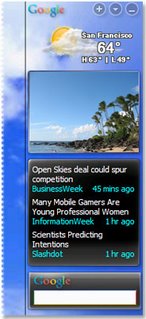According to the Radio and Internet Newsletter, the US Copyright Royalty Board (CRB) has just announced its decision on Internet radio royalty rates, rejecting all of the arguments made by Webcasters and instead adopting the "per play" rate proposal put forth by SoundExchange(a digital music fee collection body created by the RIAA).
RAIN says the rates that the Board has decided on, effective retroactively through the beginning of 2006. They are as follows:
2006
$.0008 per performance 2007
$.0011 per performance 2008
$.0014 per performance 2009
$.0018 per performance 2010
A "performance" is defined as the streaming of one song to one listener; thus a station that has an average audience of 500 listeners racks up 500 "performances" for each song it plays. The minimum royalty fee is $500 per channel per year. There is no clear definition of what a 'channel' is for services that make up individualized playlists for listeners.
For noncommercial webcasters, the fee will be $500 per channel, for up to 159,140 ATH (aggregate tuning hours) per month. They would then have to pay the commercial rate for all transmissions above that number.
Participants are granted a 15 day period wherein they have the opportunity to ask the CRB for a re-hearing. Within 60 days of this final determination, the decision is supposed to be published in the Federal Register, along with any technical corrections that the Board may wish to make.
Basically, that wipes out any chance of profit for niche radio networks on the web. The advertising they are able to command will never be enough to pay those bills in 2007, let alone in 2010. And remember these fees are simply the performance rights and do not include money that goes to the original composers.
It is also not clear whether these sorts of rights would apply if music was streamed to mobile phones, like on the DMB/DVB-H type networks being rolled out in Europe.
So what will this mean? A mass migration of US webradio services to servers outside the US? A great boost to non-RIAA music like that found on Podsafe music network? I think it just means that US radio stations will kill their Internet radio services for the time being until these lunatics realise they are truly throttling the music business. Hopefully it means European music stations now have a chance of a global audience. Radio is certainly scoring a series of own-goals.






